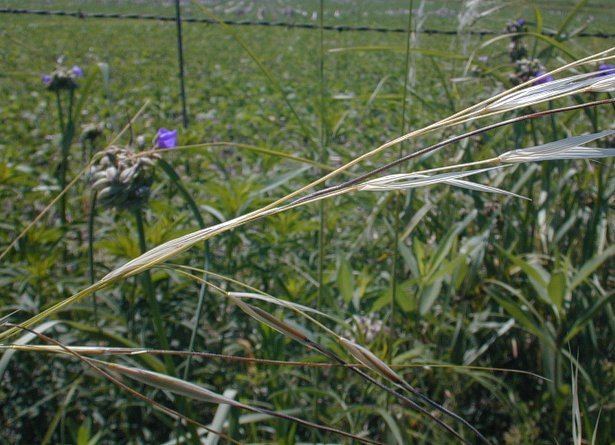Rank Species | ||
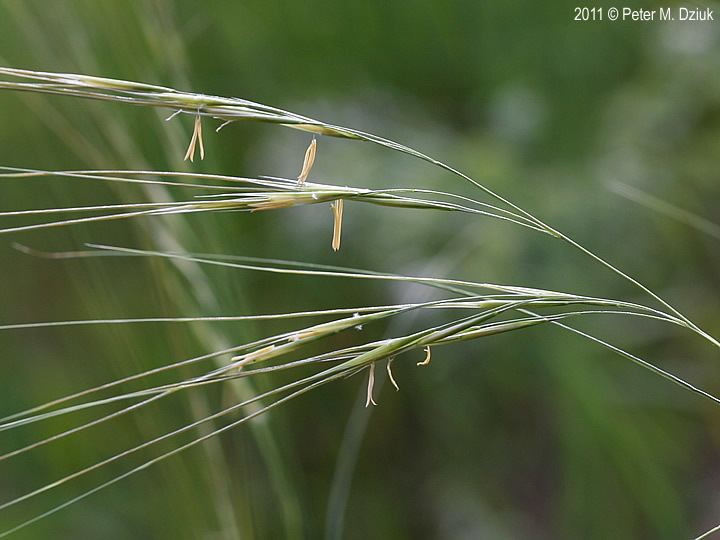 | ||
Similar Hesperostipa, Stipa spartea, Hesperostipa comata, Muhlenbergia cuspidata, Calamovilfa longifolia | ||
Hesperostipa spartea awns
Hesperostipa spartea is a species of grass known by the common names porcupine grass, western porcupine grass, short-awn porcupine grass, porcupine needlegrass, and big needlegrass. It is native to North America, where it is widespread from British Columbia to Ontario in Canada and through the central and Great Lakes regions of the United States.
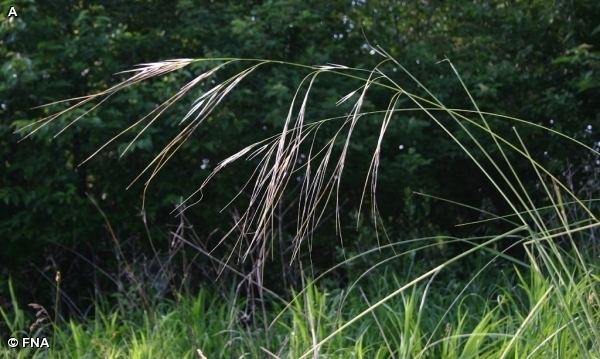
This perennial bunchgrass is similar to needle-and-thread grass, but it has longer, wider, paler leaves. It can reach over a metre in height. The roots are known to reach 1.8 metres (5.9 feet) deep into the soil. The inflorescence is a panicle of spikelets. Each fruit has a very long, twisted awn, reaching up to 19 centimetres (7.5 inches) in length. As the grass expands or contracts according to the temperature and moisture conditions, the awns twist or untwist to eventually drill the seeds into the soil – a phenomenon known as geocarpy. The awns containing several seeds may tangle together and the mass is blown away from the parent plant on the wind. They also stick to animals, another vector of seed dispersal.
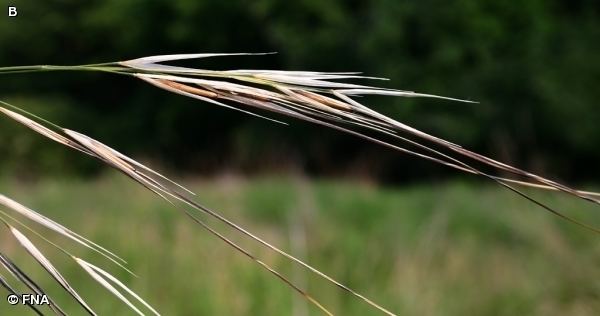
This grass is common and is a dominant grass in various prairie and grassland ecosystems in the Great Plains. In Alberta it is codominant with rough fescue on the grasslands. In other areas it may be codominant with little bluestem. It may be a pioneer species or a climax species, occurring in all stages of ecological succession. It thrives on poor soils and it can invade disturbed habitat such as gopher mounds. It can also be a long-term component of climax grassland and prairie.
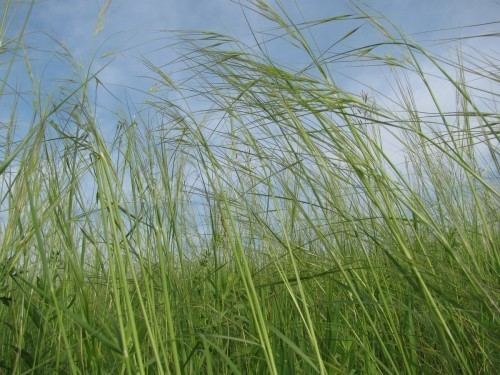
This grass is not ideal for livestock but it is generally palatable, especially in the spring. It is also valuable in the fall when it remains green as other grasses dry out. When the fruit is mature, the long, sharp awns reduce the palatability of the grass.
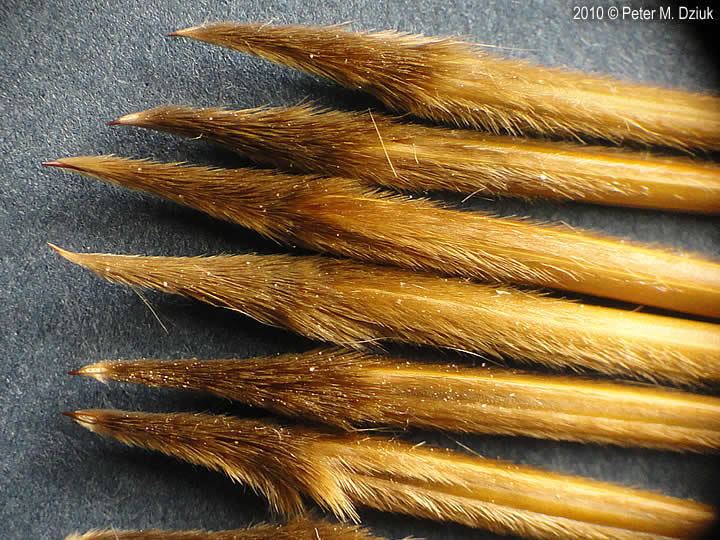
Native Americans such as the Omaha and Pawnee made brushes from this plant by tying the awns together and burning off the sharp seeds at the ends.
